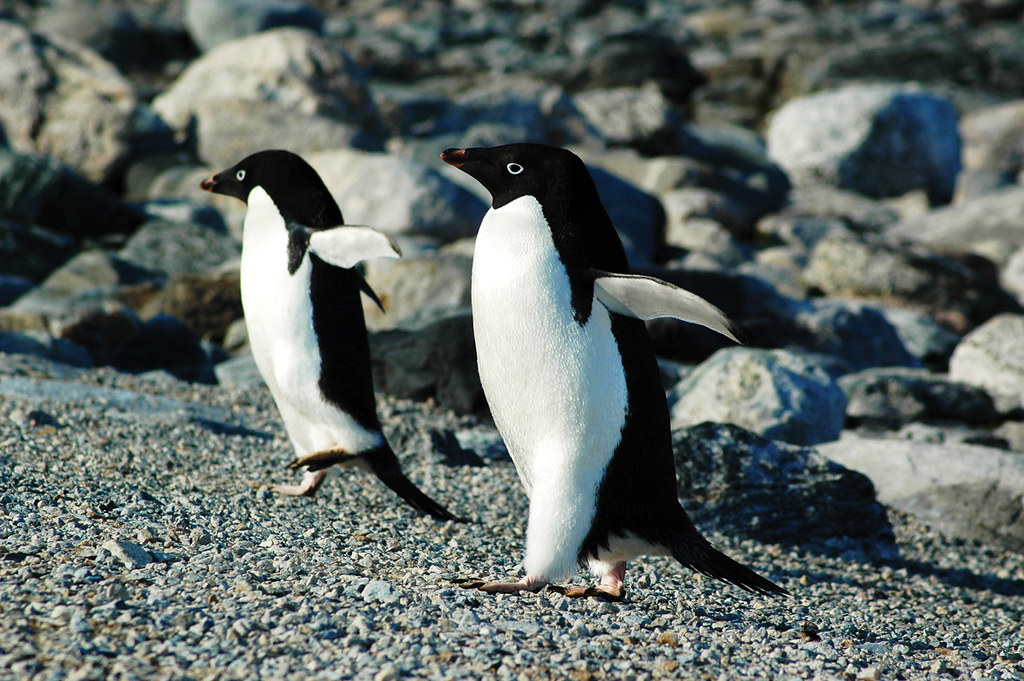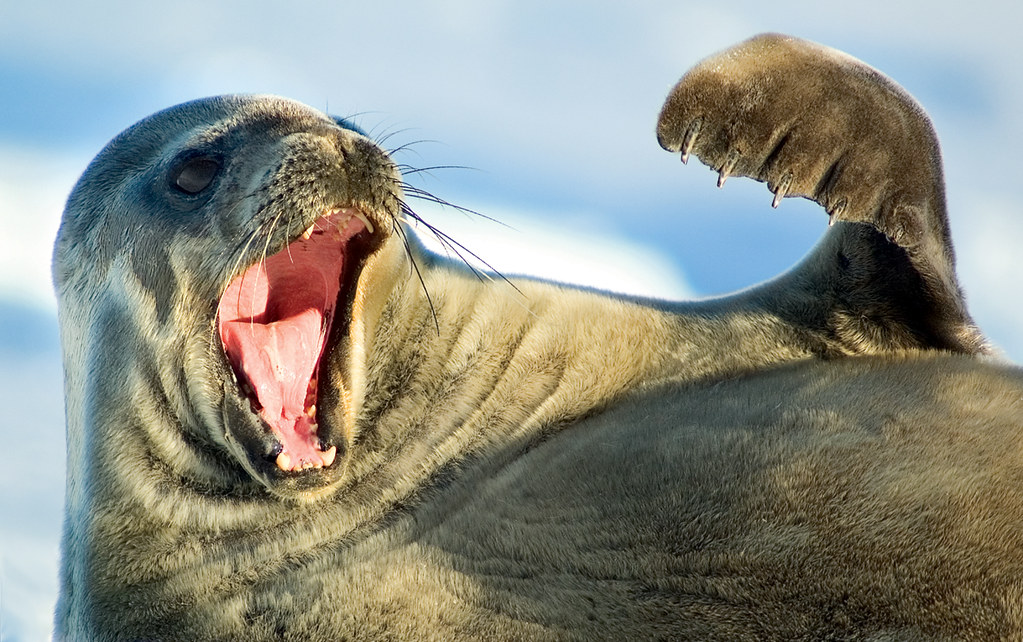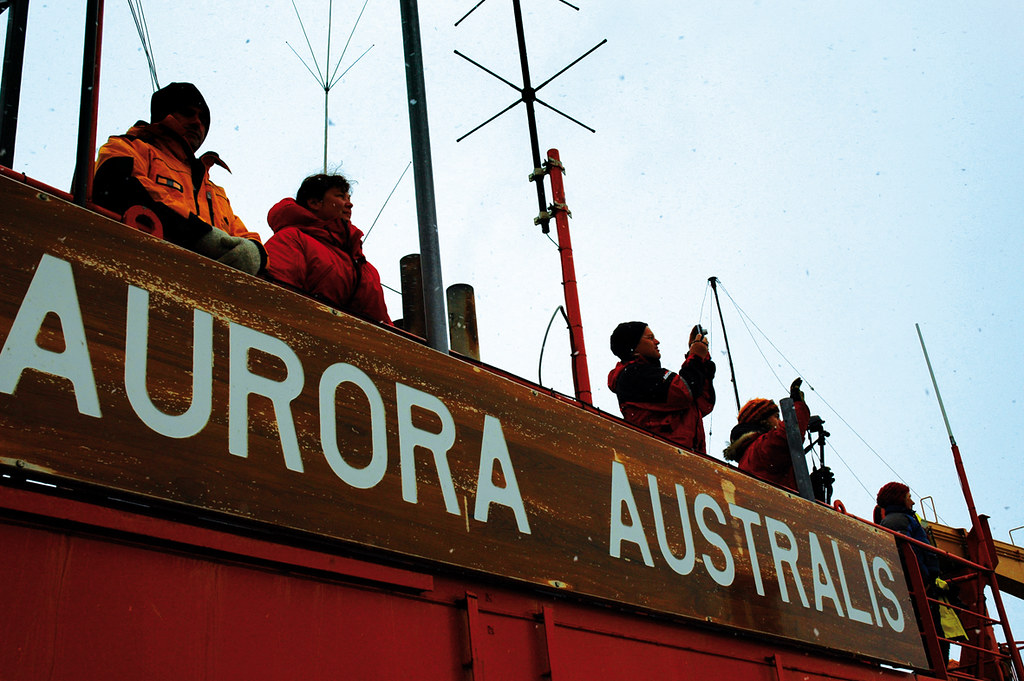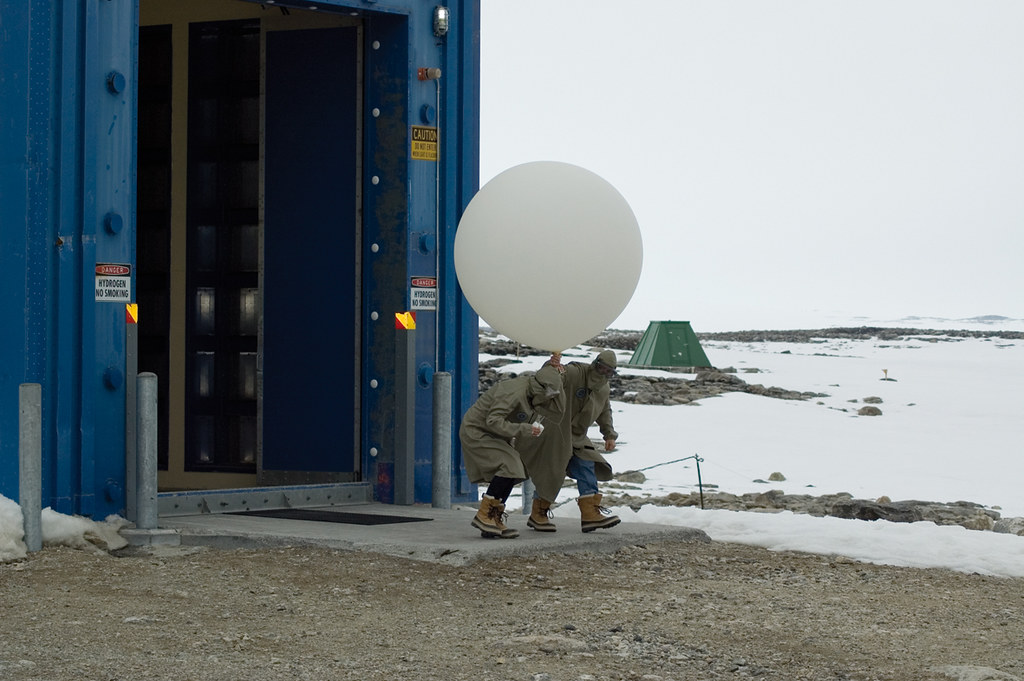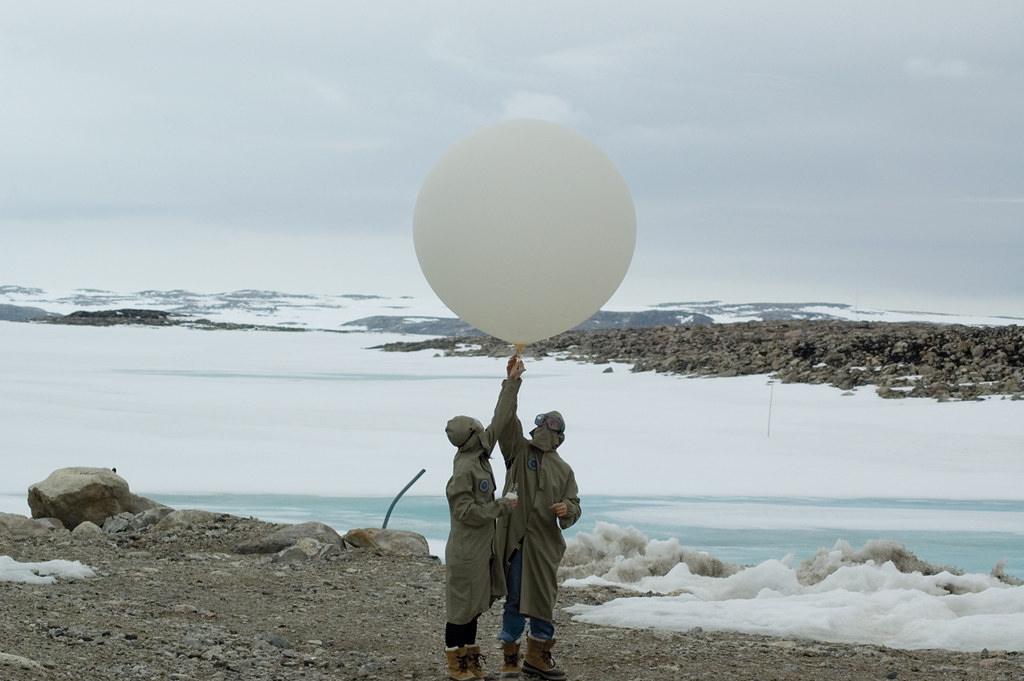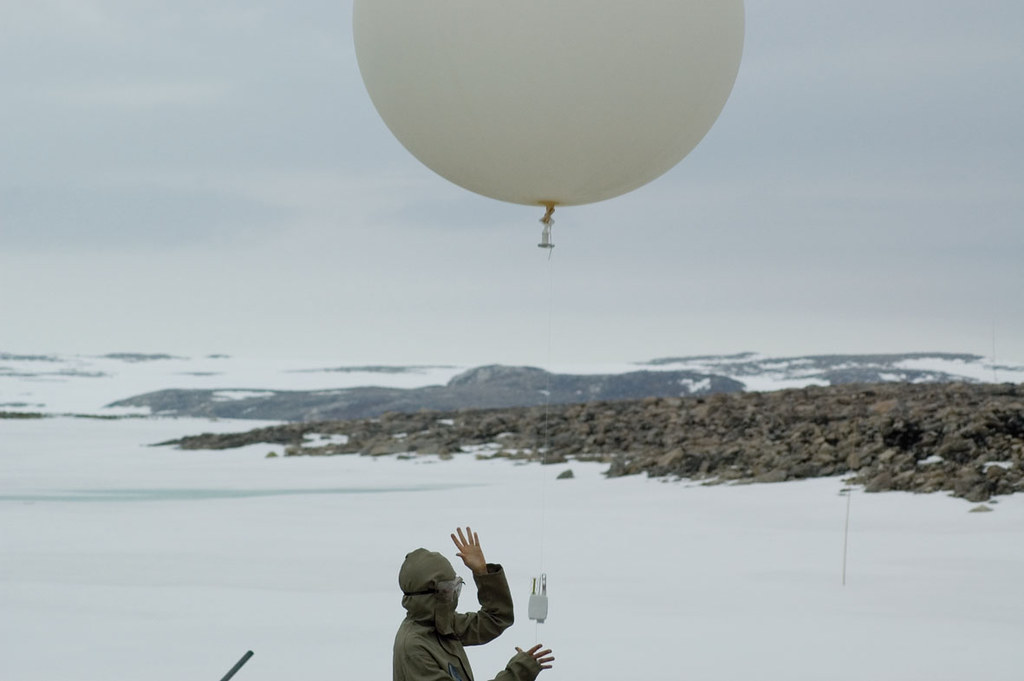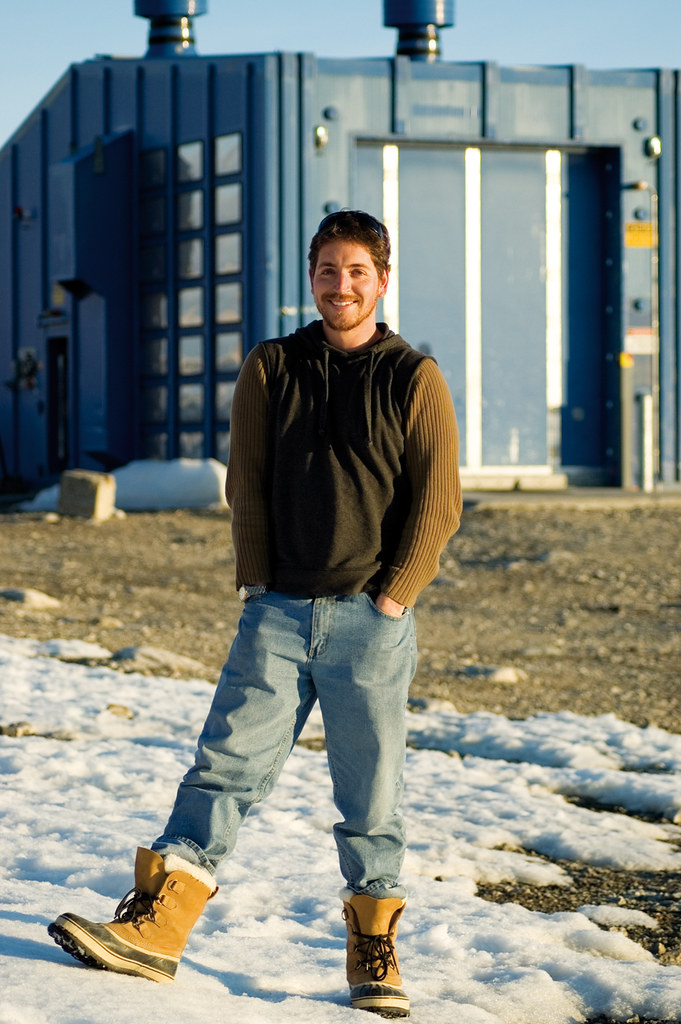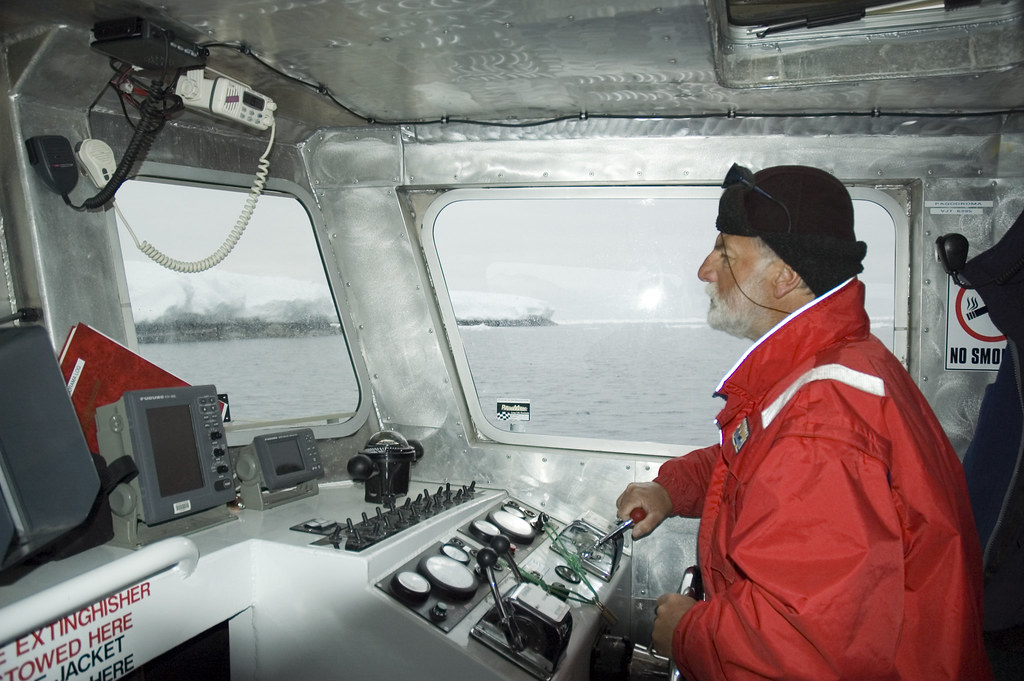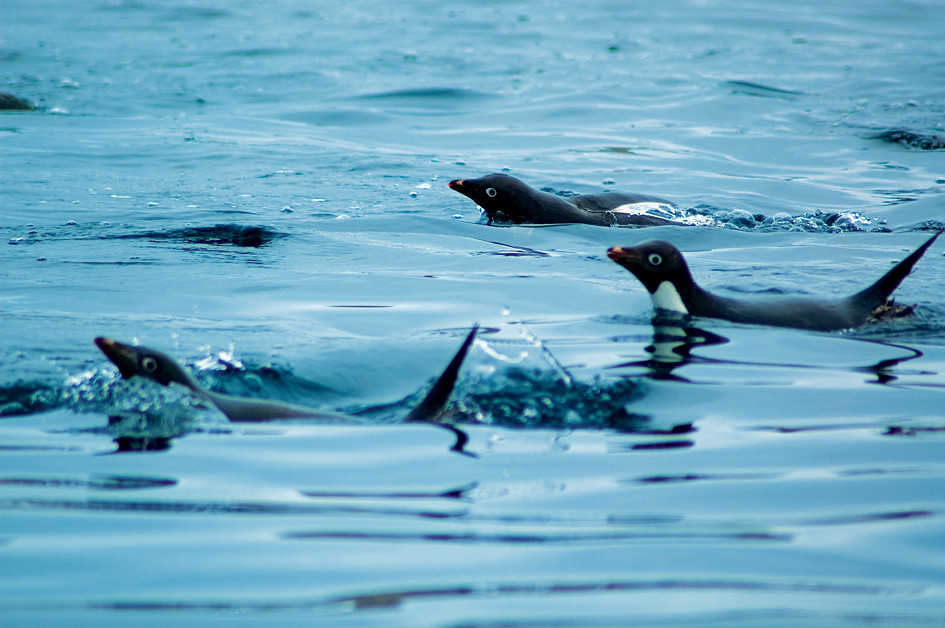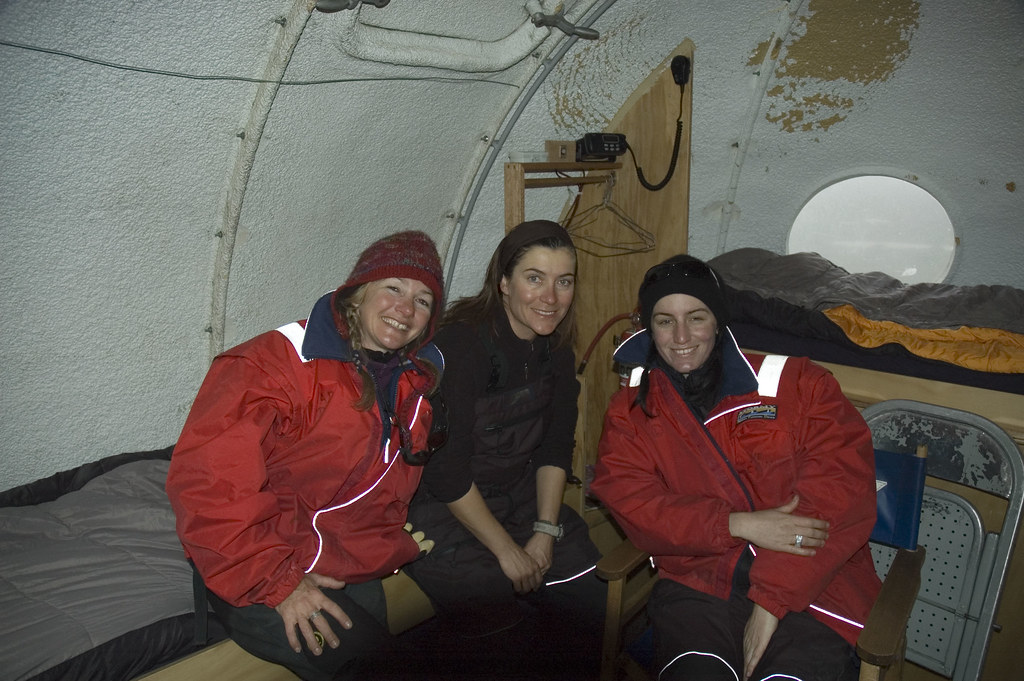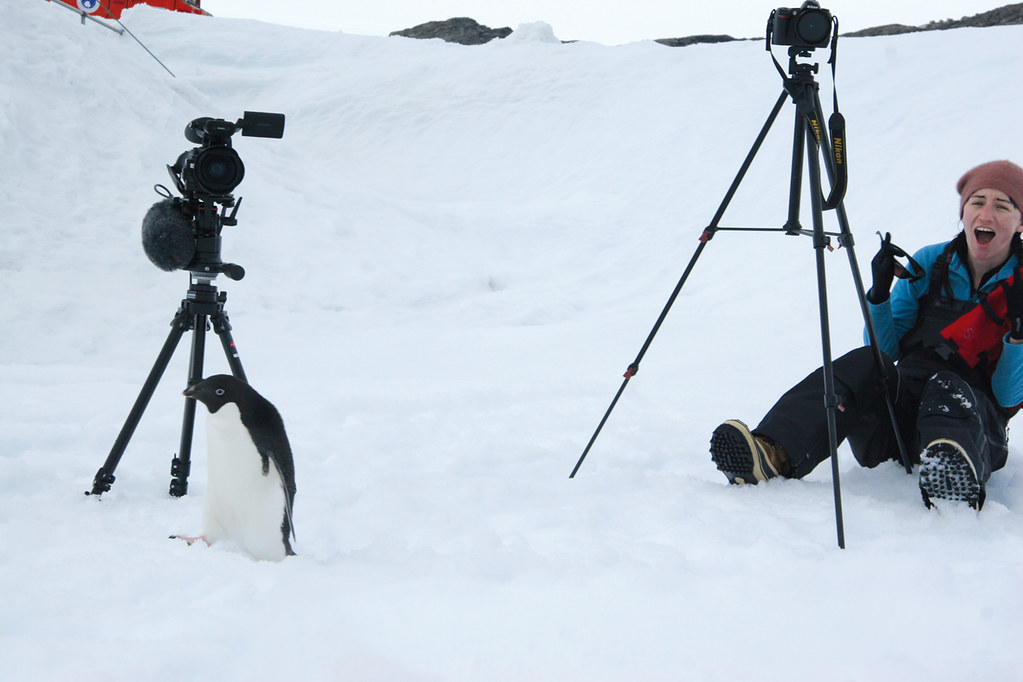Last night I headed back to the Aurora for a pirate-themed New Year's Eve party. Limited resources encouraged some interesting interpretations of the theme, ranging from a parrot constructed out of a laundry detergent container to limited edition spray painted pirate t-shirts that some of the crew were sporting.
After welcoming 2007 between cries of ‘Arrrrr’ and 'Cheers' I was up early and on the first barge back to Casey. The day was to about to become a busy one, with station refuelling scheduled to begin today. I was heading out of town to visit a large penguin colony at Whitney Point.
We could hear them before we could see them. When we arrived, after trekking around the coastline from Casey to Whitney Point — the site of a large Adelie penguin rookery — I was a bit overwhelmed. I was surrounded by hundreds, maybe thousands of penguins, many of them with newborn chicks delicately tucked underneath their bellies. All Antarctic animals are protected under the Antarctic Treaty and Environment Protection Act, so we needed special permits to visit this rookery. I had been warned not to approach them too closely (5 m for non-breeding penguins and 30 m for breeding pairs), but it quickly became apparent that a few of these Adelies hadn’t read the latest Australian Antarctic Division Field Manual! Some (I suspect they were juveniles) ran fearlessly towards me, almost as if they were carrying out an inspection. Others were quite dismissive of my presence, and a few — perhaps the uncles andaunties of the newborns — adopted a protective stance around the chicks.
You can spot an Adelie by its black and white ‘dinner jacket’. About 2.5 million pairs of Adelie penguins are thought to live in Antarctica — and they haven’t all been counted yet! Adelie penguins don’t march 90 km inland like their ‘movie star’ emperor penguin relatives.
But, that doesn’t mean they have it easy when it comes to breeding. Instead of heading inland to lay their eggs, Adelies build their nests on land close to the seashore, using pebbles that they collect from the rocky slopes around them.
When I visited this rookery they were keeping a close eye on the circling
skuas above that prey on the eggs and young of Adelie penguins over the summer. Skuas can often be found lurking on the edges of penguin colonies, on the look-out for a potential meal. They are superbly adapted to catching fish, but also prey upon bird eggs and chicks. These beautiful birds are strong flyers, and they will fiercely defend their nesting area from all comers, including humans!
Our accommodation tonight is luxurious… by Antarctic standards! The ‘Wilkes Hilton’ hut is about 1 km from Wilkes Station, which was established by the United States in 1957. But, because they built it in an area heavily affected by snow, it got buried every winter! In 1959, the Americans handed ‘operational command’ of the station to Australia and walked out, leaving everything as it was. Today, most of it remains.
Cup of tea time.

